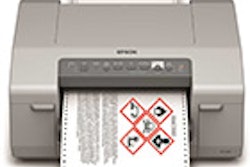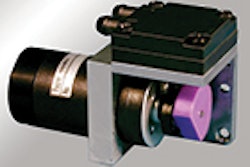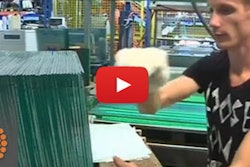In the oil and gas industry, corrosion accounts for over 25 percent of failures, according to a recent NACE International report. Corroded pipe repair or replacement costs the industry over $7 billion per year, based on estimates from the National Association of Corrosion Engineers. This figure can double when lost revenue, productivity, and spill or leak cleanup costs are tallied.
“Corrosion is a major industry challenge from external floating roof tanks, to tank interiors, to above and below grade piping systems, particularly where pipes transition from above to below grade,” says Scott Justice, Tank Division Operations Manager of Bolin Enterprises Inc. (BEI), a Casey, Ill.-based pipeline and tank maintenance contractor serving the oil and gas industry.
While traditional corrosion protection has relied mostly on short-lived physically-bonded coverings of substrate surfaces such as tapes, elaborate three-part coating systems (zinc, epoxy, and urethane), and cathodic protection, these merely attempt to lengthen the time before the steel asset inevitably rusts. Now a growing number of pro-active, oil and gas industry maintenance professionals are turning to a new category of tough, Chemically Bonded Phosphate Ceramics (CBPCs) that can stop corrosion, extend equipment life, and minimize the cost and production downtime required to recoat, repair, or replace corroded equipment.
A New Approach to Corrosion Protection
“What caught my eye about EonCoat was its unique adhesion and chemical properties,” says Justice, who visited the Wilson, N.C.-based company of the same name to view its corrosion testing lab, processes, and procedures for its CBPC coating.
In contrast to typical paint polymer coatings, which sit on top of the substrate, the anti-corrosion coating bonds through a chemical reaction with the substrate, and slight surface oxidation actually improves the reaction. This makes it impossible for corrosion promoters like oxygen and humidity to get behind the coating. The corrosion barrier is covered by a true ceramic shell, which resists corrosion, fire, water, abrasion, chemicals, and temperatures up to 1,000 °F. Even if gauged the ceramic coated substrate will not spread corrosion because the steel is essentially alloyed. Its surface oxides have been converted into an inert, electrochemically stable metal incapable of supporting oxidation. Ceramic coatings such as this are also completely inorganic so they are inhospitable to mold or bacteria.
“The results of the corrosion tank test were impressive,” says Justice. Among the corrosion tests frequently run by the manufacturer of the CBPC product is one where the ceramic coating has gone more than 10,000 hours with no corrosion in a salt spray ASTM B117 test. “If the coating works as well as we hope, it could help to stop or minimize corrosion and extend the longevity of a range of oil and gas assets,” adds Justice.
While not widely considered, the Achilles heel of many traditional corrosion coatings may be in how exact the environmental conditions must be during their application to meet specifications. “A lot of coating products fail due to changes in temperature, humidity, dew point and other atmospheric factors during application,” says Justice. “As conditions change seasonally throughout the year, it can be difficult to provide perfect coating conditions.” A plus for corrosion protection is how the protective ceramic coating can be applied on hot and cold surfaces from 40 °F to 150 °F in 0-95% humidity, excluding direct rain. These ceramic coatings consist of two, non-hazardous ingredients that do not interact until applied by a plural component spray gun like those commonly used to apply polyurethane foam or polyurea coatings. Since the components are not mixed and do not meet prior to application, the need for hazardous VOC-generating ingredients is eliminated, as are HAPs and odor. This means that the coating can be applied in occupied areas.
Cutting Production Downtime
Shane Bartko, a Director at TKO Specialty Surfaces, a Calgary, Alberta-based tank, pipeline and structure maintenance contractor, has used the ceramic coating for corrosion control on a variety of oil and gas projects including storage and process tanks, refinery flare stack vessels, refinery sulfur plant roofing, as well as a train loading platform and towers. “To keep a corrosive coating working well, you want one that will be resistant to high temperature, abrasion, chemicals, UV sunlight, and other environmental factors,” says Bartko. “EonCoat is strong in these areas, but just as important is how quickly it can get an oil and gas facility up and running. As a comparison, it took us about four days with EonCoat, compared to about 10 to 12 days with other coatings.”
In contrast to typical paints, a corrosion coating can be achieved with the ceramic coating in a single coat, with almost no curing time necessary, and with minimal surface prep. Return to service can be achieved in as little as one hour. “With the ceramic coating for corrosion protection, we were able to get facilities back up and running right away after spraying, sometimes in an hour,” says Bartko. “That kind of speed in getting an oil and gas facility producing again can potentially save millions per day in reduced downtime. It makes sense to use the ceramic coating anywhere steel is used and may corrode, from pipelines and processing to storage.”























